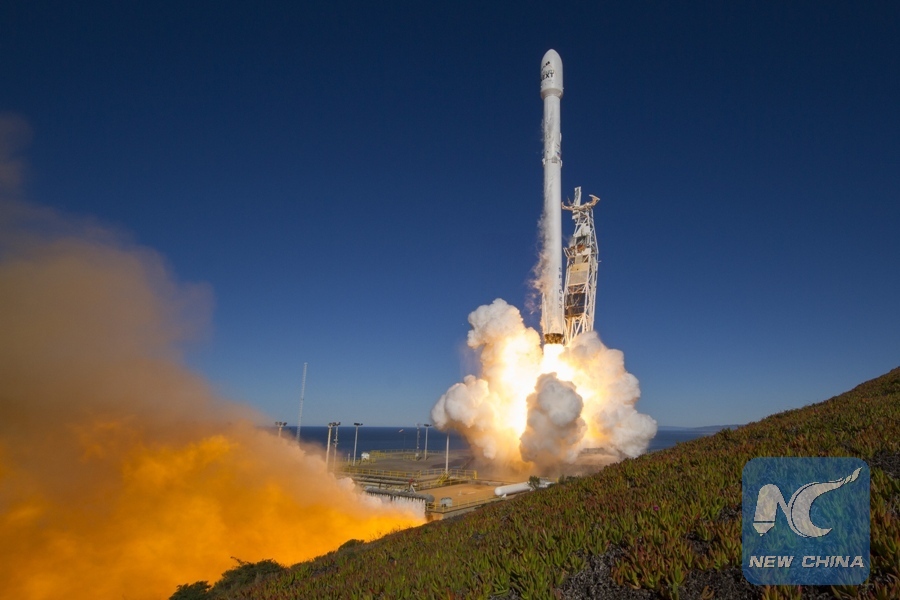
File Photo: SpaceX Falcon 9 lifts off from Space Launch Complex 4E at Vandenberg Air Force Base in California, the United States, Jan. 14, 2017. (Xinhua)
LOS ANGELES, Feb. 21 (Xinhua) -- SpaceX called off an attempted launch of its Falcon 9 rocket Wednesday morning due to strong high-altitude winds and is slated to launch its first Starlink broadband satellites on Thursday.
The Falcon 9 rocket was scheduled to lift off at 6:17 a.m. local time (1417 GMT) from Space Launch Complex 4E at California's Vandenberg Air Force Base.
But about 10 minutes before liftoff, SpaceX announced it was standing down from the launch try due to strong upper level winds. The mission is now targeting for Thursday (February 22) at 6:17 a.m. PST.
"High altitude wind shear data shows a probable 2% load exceedance. Small, but better to be paranoid. Postponing launch to tomorrow, assuming winds are better then," SpaceX's CEO Elon Musk then tweeted.
The launch's primary mission is to deliver PAZ, a radar-imaging satellite, into orbit for the Spain-based company Hisdesat.
The Falcon 9 has flown in space before. Wednesday is not the first time the company has postponed the PAZ launch. On Saturday (Feb. 17.), SpaceX announced that more time was needed for final checks of the Falcon 9 rocket's upgraded payload fairing. The rocket was then scheduled to launch on Feb. 18.
Then SpaceX representatives wrote on Feb. 18: "Team at Vandenberg is taking additional time to perform final checkouts of upgraded fairing. Payload and vehicle remain healthy. Due to mission requirements, now targeting February 21 launch of PAZ."
According to the mission description, equipped with an advanced radar instrument, PAZ will cover the entire globe in 24 hours, serving both commercial and government needs. Designed for a mission life of five and a half years, PAZ will orbit Earth 15 times per day, covering an area of over 300,000 square kilometers from an altitude of 514 kilometers and a velocity of seven kilometers per second.
However, Paz won't be riding alone on the recycled Falcon 9.
Quietly on board will be two experimental broadband satellites, Microsat-2a and Microsat-2b, a big first step in SpaceX's long-term plans to create satellite internet over the next decade.
The launch also "carries 2 SpaceX test satellites for global broadband. If successful, Starlink constellation will serve least served," said Musk on Wednesday.
The company has been relatively mum about the debut of its Starlink satellites, and about the entire program itself.
However, according to the open files between SpaceX and the U.S. Federal Communications Commission (FCC), in the coming years, the company hopes to create a giant constellation of about 12,000 of interlinked broadband-internet satellites that will orbit in a synchronized dance above Earth, beaming internet connectivity to antenna receivers on the planet's surface.
Some 4,425 satellites will sit at low earth orbit(LEO), an estimate of 1150 to 1325 kilometers above Earth, while another 7,518 satellites will be launched into very-low-earth orbits (VLEO), some 335 to 346 kilometers above Earth.
According to a tally by the Union of Concerned Scientists, there are 1,738 satellites currently orbiting Earth.
Last Wednesday, FCC Chairman Ajit Pai gave his endorsement to SpaceX's application to operate two huge constellations of broadband satellites.

